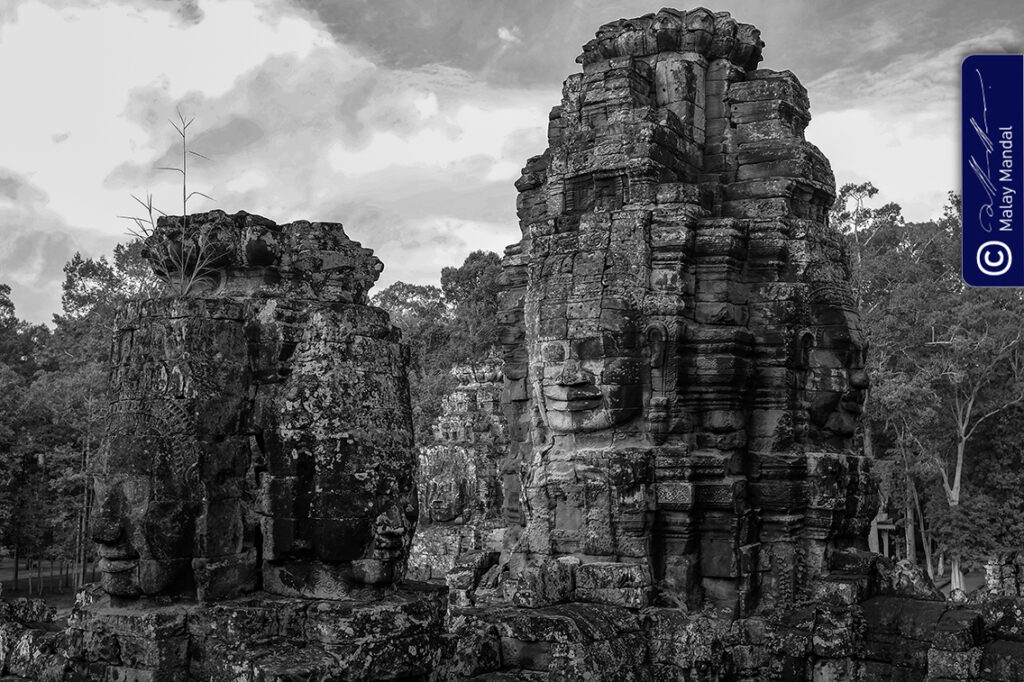
“Ah! If our heart aches sharply, if our soul is tossed by some human tempest, I do not think there is any place on earth more attuned to confidences than this. Nowhere else will our raised eyes find a gentler attentiveness to share in our dreams and all the while engage us with a smile. The Bayon is not a temple in ruins. It allows no evocation of the human suffering or pride at its origin. It has neither vanity nor splendor. It seems to have risen from the earth of its own accord. It is like a dream. After a while it exalts one’s joys, and assuages one’s pain.”
George Groslier (1913)
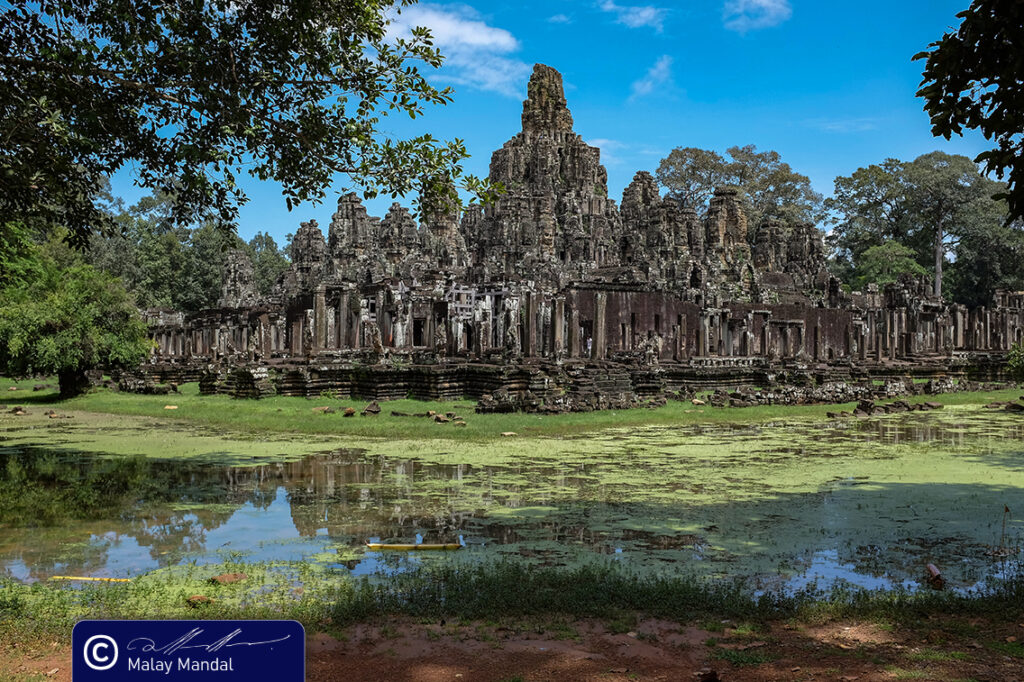
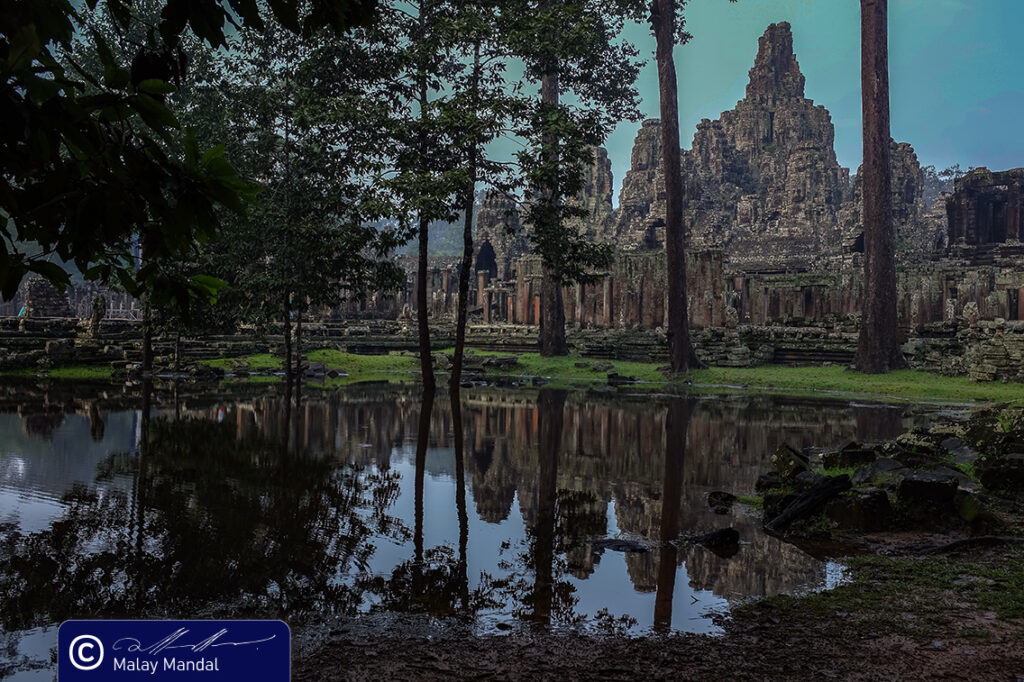
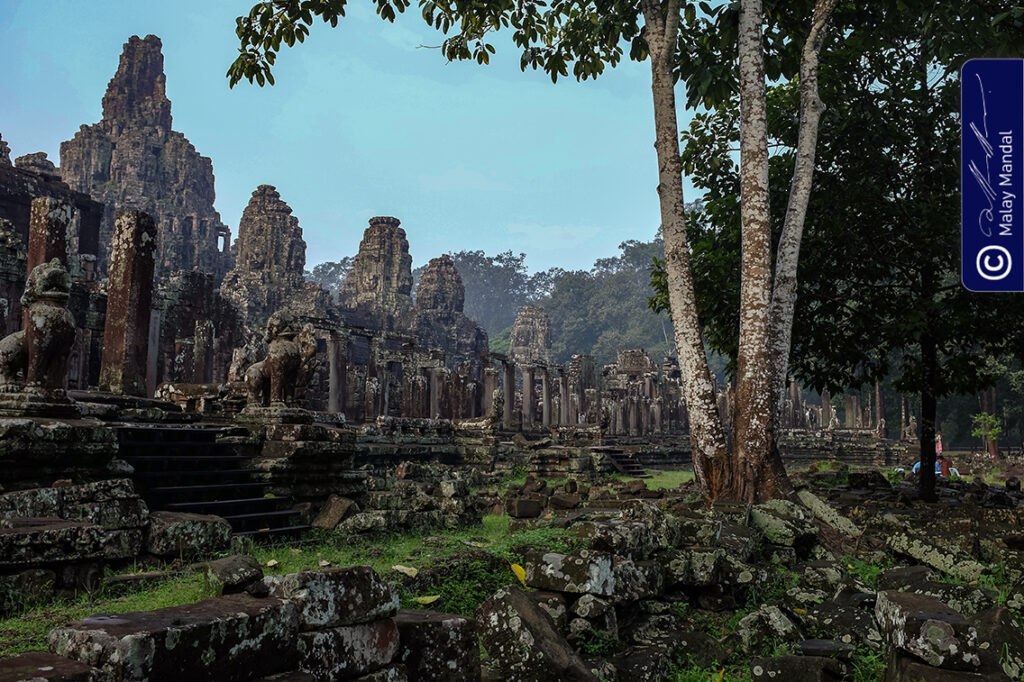
Introduction | If Angkor Wat is all about grandeur, Bayon is an enigma. Still an unsolved mystery, the temple of Bayon, sitting right at the middle of imperial city of Angkor Thom is a hot favorite with visitors; it lacks sophistication of Angkor Wat but has a rare magical charm of its own. The origins are unclear; however, it can be said with some certainty that Bayon attained it present form during the reign of Khmer King Jayavarman VII (r. 1181-1219/20 CE) who identified himself with Buddhist deity Avalokiteshvara. It is his omnipresent gaze from 216 suspiciously smiling faces on 54 face towers that makes Bayon an exceedingly mysterious environ. Today, it resembles a pile of stone but originally it was coated – a layer of gold over the central spire. Glaize remarks, “This is, with no doubt, the “Golden Tower” described by Tcheou Ta-Kouan as “marking the centre of the kingdom, flanked by more than 20 stone towers and at least one hundred stone chambers”.
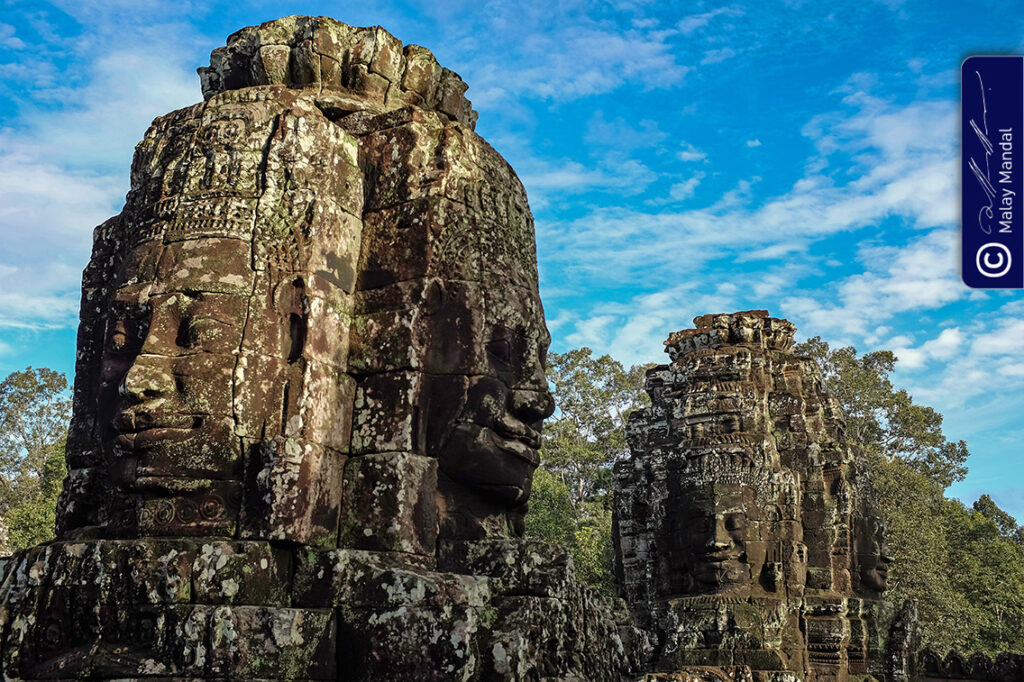

Orientation and Layout | The ground plan is ingeniously crafted to create drama; both in spatial distribution of its associated structures and in their elevated positioning. The visual spectacles of upper levels are not conspicuous from the base; not a hint of it with intermediate blocks successfully blocking the line of sight. The impactful arrangement of face-towers at second level only becomes apparent when we reach the upper reaches, quite like the pyramidal tiered temples of Pre Rup, East Mebon and Phnom Bakheng. Glaize argues, “The confusion in the plan of the Bayon and the intricacy of its buildings results no doubt from the successive alterations to which the monument was subjected, that are evident just about everywhere. These changes could well have been made either during the course of construction or at other times – so not all necessarily corresponding to the reign of Jayavarman VII.” Rooney also points out, “Despite this seemingly simple plan, the layout of the Bayon is complex due to later additions, a maze of galleries, passages and steps, connected in a way that makes the levels practically indistinguishable and creates dim lighting, narrow walkways and low ceilings.”
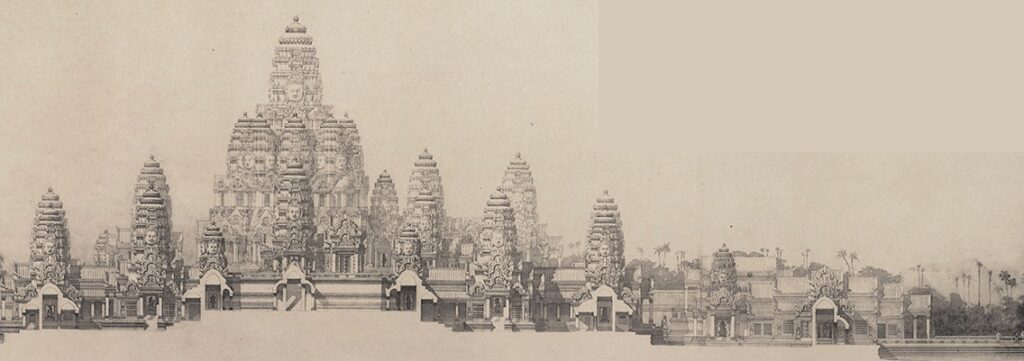
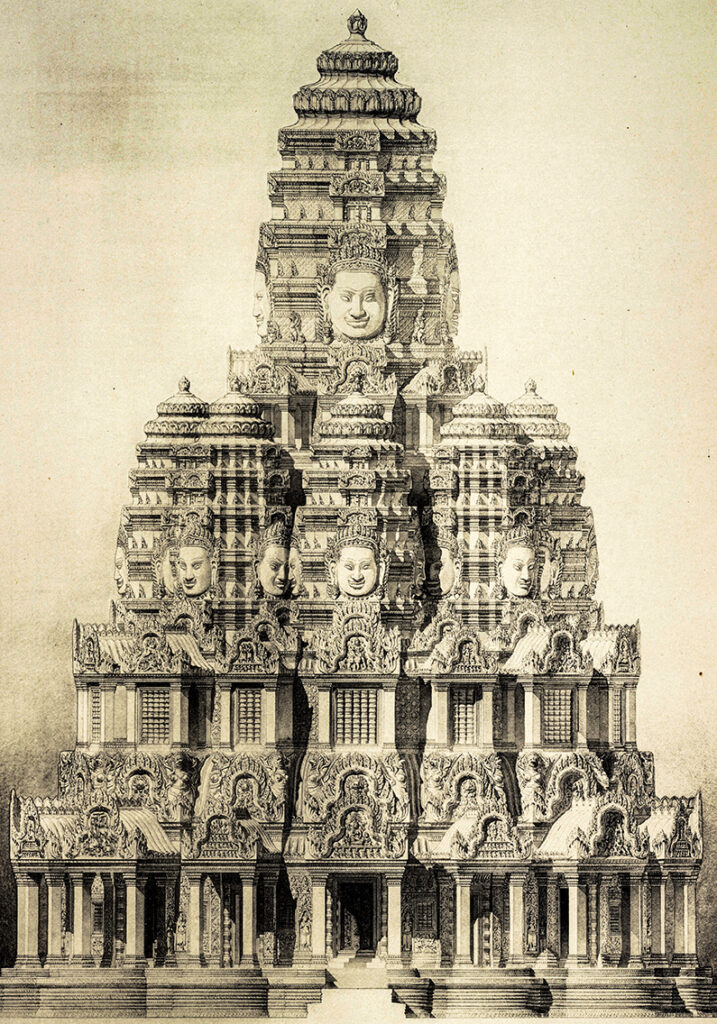
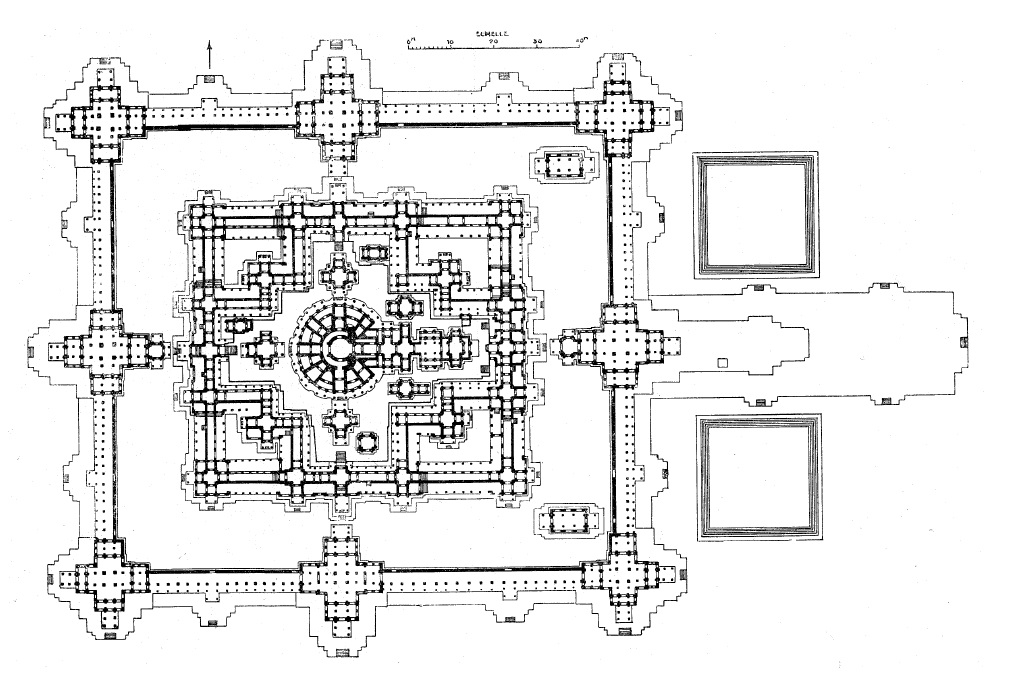
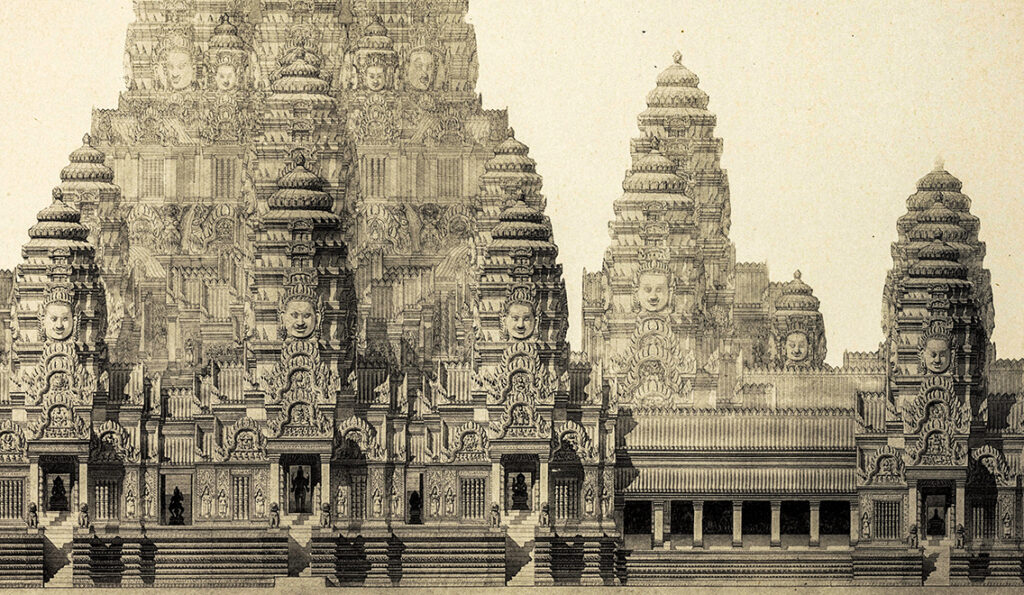
Face-Towers | Bayon is exceptional for its arrangement of face-towers; they very much define it. The edifice will lose it whole character, if these face-towers are removed. These facial representations – an egoistic act of Jayavarman VII – were sculpted to project the monarch as an icon; a symbol of supremacy, power and divine authority. But the overall impact created by city planners and architects of Jayavarman VII in blending the material aspects with the divinity is simply unmatched. In words of Groslier, “Old temples of competent but undistinguished art might succeed in combining the mysteries of the past with the mysteries of nature, and they might display all the beauties that architecture can express, but they cannot bear comparison with what radiates from the Bayon, for at the Bayon it is all somehow tangible, directly stated by stone become man, stone become God. It requires no interpretation. It is not light that is smiling but a mouth. What permeates us are not the uncertain meanings discerned by our imagination but gazes, true gazes, cast on us by eyes of rain-softened contour. Their nobility and calm are human, not cold like the nobility and calm of line and mass. Everything is latent, eternal life. God is there, truly present. He smiles. And all that is no more lives on in his smile.”



Bas-Reliefs | Spread over two levels, bas reliefs at Bayon run over two enclosing galleries totaling a whopping 1.2 Kms with around 11,000 figures. Though, there is a significant difference here in the choice of thematic; while the internal galleries contain mythological depictions from Indian epics, the outer ones accommodate chronologies of importance historical events. Glaize opines, “The Bayon bas-reliefs are less stylised and more deeply incised than those of Angkor Wat, and although often quite crude in execution and simplistic in form, they provide a source of documentation which is remarkable, both for the care taken in the representation of the smallest detail and for the qualities of observation which they show – and it is practically the only source we have that gives an idea of the customs and conditions of life in ancient Cambodia.” In addition to the bas-reliefs, Bayon also has 42 inscriptions from its past.



Restoration | When it was discovered by the French orientalists, Bayon was in shambles, completely taken over by the forces of nature. We find a rare description of its state in words of Pierre Loti, “Previously it was necessary, in a complete tangle of dense undergrowth and hanging vegetation, to clear a path with a thrashing stick. Everywhere the forest entwines and constricts, choking and encumbering. The immense trees, completing the destruction, have taken hold even on the summit of the towers which serve them as pedestals. Here are the doors – the roots, like an old mane, draping them with a thousand fringes.” Commaille accomplished the most arduous task of the clearing the ruined pile of rubble, but lamented, “Every month, perhaps every day, some stones would fall. The complete ruin of the temple was only a matter of time, and it was necessary to consider how to halt it without further delay.”
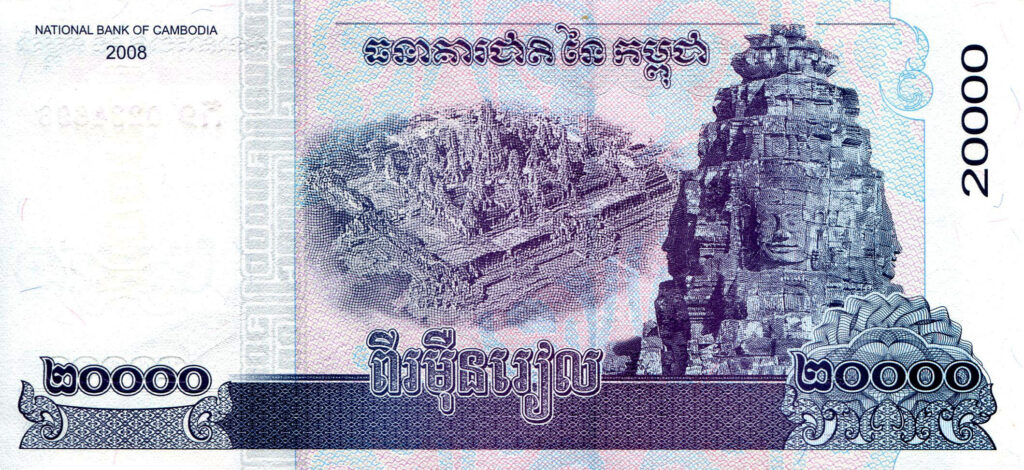
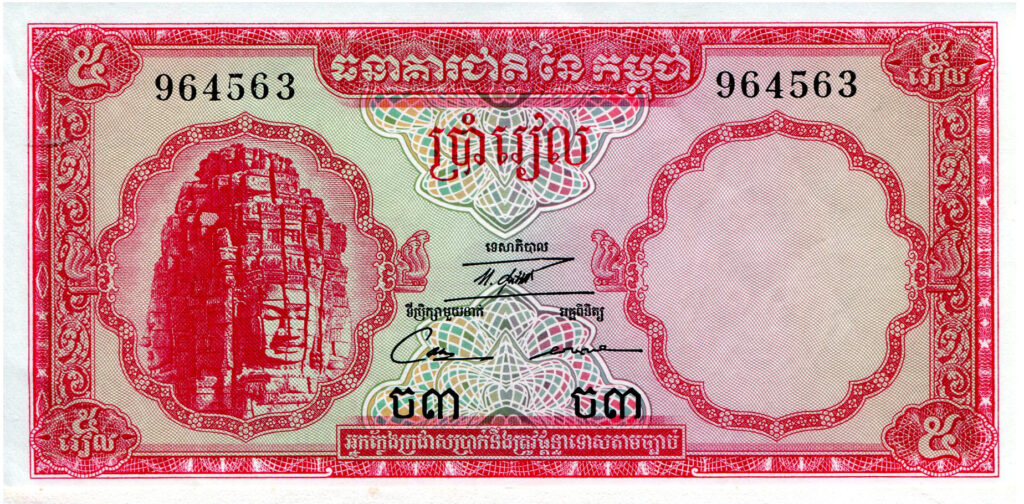
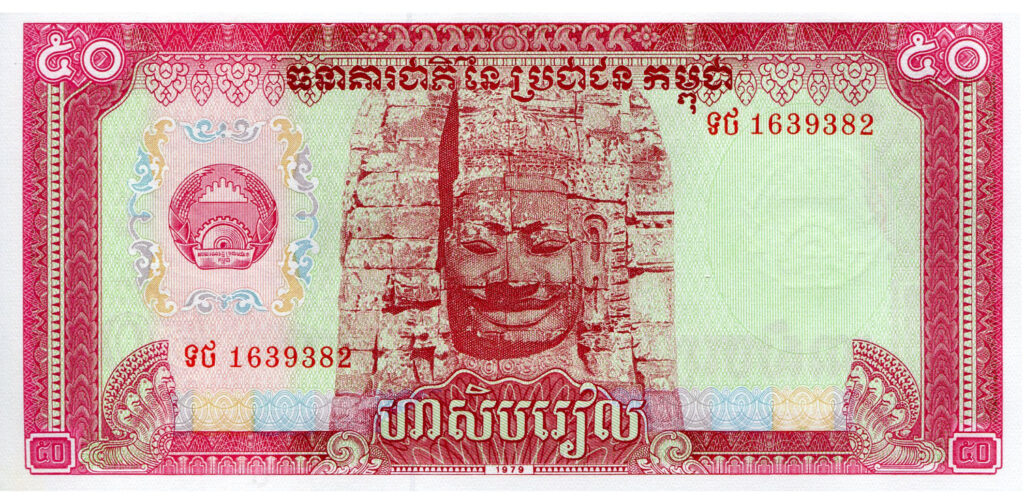
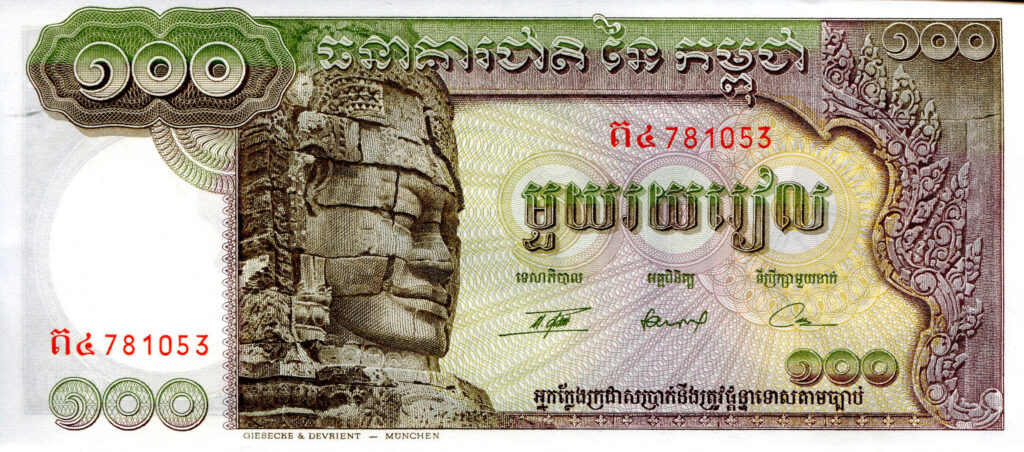
New Insights | In recent times, a number of scholars have been working tirelessly to decode the many secrets that Bayon beholds. Peter D. Sharrock of SOAS has shred some valuable information about the origin of its ground plan. He points out, “The emphatic use of a motif of dancing goddesses on the Bayon is unprecedented in Khmer temple decoration, and yet this is what we might anticipate in a cult of Hevajra, a fierce deity of the Vajrayāna who worked through the intercession of ascetic goddesses or yoginīs. Further, large halls adorned with similar dancers were inserted late into the king’s other temples, in an update package that suggests a cultic shift. This, and further concurrent evidence, appears to entitles us to infer a royal Hevajra cult, and therefore to propose a revaluation of the creed of the Bayon temple and the deity in its enigmatic giant face towers.” Practicalities | Bayon can be visited with the Angkor Pass; at least two visits are highly recommended. Glaize, who performed Anastylosis of the four-faced towers and the central tower between 1939 to 1946 has this to say about exploring this confusing mass of stone, “The Bayon best presents itself in the morning, when the sunlight is the most favourable. One should not fail, however, to return by the light of the moon, when the lines and shadows become softened and the stone and its verdant background composed in a perfect unity of hue and tone – when the faces, mellow and subdued, take on an emotive expression from which radiates a sort of lyrical charm – where each becomes exaggerated in over-scale, doubled in profile and infinite in multiplicity. One dissolves in the serenity of this Buddhist tranquility, embryonic amongst the phantoms.” Spare some time with the face-towers; and observe their ever-changing gaze. Take stroll around the whole complex to appreciate its visual appeal.
